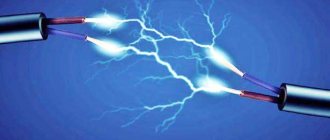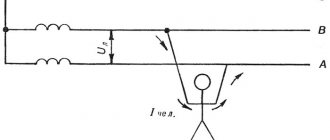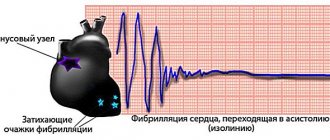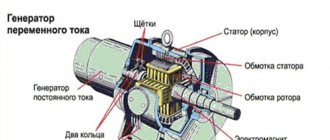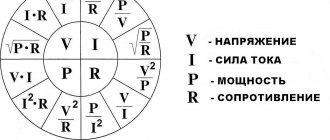First aid is a set of measures aimed at restoring or preserving the life and health of the victim. It should be provided by someone who is next to the victim (mutual aid) or by the victim himself (self-help) until a medical worker arrives. The life of the victim and, as a rule, the success of subsequent treatment depends on how skillfully and quickly first aid is provided. Therefore, everyone should know how to provide first aid and be able to provide it to the victim and themselves.
The sequence of actions when providing first aid to a victim:
- eliminating the impact of dangerous and harmful factors on the victim’s body (freeing him from the action of electric current, removing him from a contaminated atmosphere, extinguishing burning clothing, removing him from water, etc.);
- assessment of the victim’s condition;
- determining the nature of the injury that poses the greatest threat to the life of the victim, and the sequence of actions to save him;
- carrying out the necessary measures to save the victim in order of urgency (restoring the airway, performing artificial respiration, external cardiac massage, stopping bleeding, immobilizing the fracture site, applying a bandage, etc.);
- maintaining the victim’s basic vital functions until medical personnel arrive;
- calling an ambulance or a doctor or taking measures to transport the victim to the nearest medical facility.
Release from the action of electric current.
In case of electric shock, it is necessary to free the victim from the action of the current as quickly as possible, since the severity of the electrical injury depends on the duration of its effect on the body. You can turn off the electrical installation using a switch, knife switch or other disconnecting device, as well as by removing fuses, plug connections, creating an artificial short circuit on the overhead line (overhead line) by “throwing”, etc.
If it is not possible to quickly turn off the electrical installation, then measures must be taken to separate the victim from the live parts that he touches. In all cases, the person providing assistance should not touch the victim without taking proper precautions, as this is life-threatening. He must also ensure that he himself does not come into contact with a live part or live step while in the zone of spreading of the ground fault current.
At voltages up to 1000 V, to separate the victim from live parts or wires, use a rope, stick, board or some other dry object that does not conduct electric current. You can pull the victim away from live parts by clothing, while avoiding touching surrounding metal objects and parts of the victim’s body not covered by clothing. To isolate the hands, the person providing assistance, especially if he needs to touch the body of the victim who is not covered by clothing, must wear insulating gloves or wrap his hand in a scarf, put a cloth cap on it, pull the sleeve of a jacket or coat over his hand, throw a rubber carpet or rubberized material over the victim ( raincoat) or just dry cloth. You can also isolate yourself by standing on a rubber carpet, a dry board or some kind of non-electrically conductive bedding, a bundle of dry clothes, etc. When separating a victim from live parts, you should act with one hand.
If an electric current passes into the ground through the victim and he convulsively squeezes the current-carrying element in his hand, you can cut the wire with an ax with a dry wooden handle or make a break using a tool with insulating handles. It is necessary to cut the wires in phases, i.e. cut the wire of each phase separately.
At voltages above 1000 V, to separate the victim from live parts, it is necessary to use protective equipment: wear dielectric gloves and boots and use a rod or insulating pliers designed for the appropriate voltage. On 6-20 kV overhead lines, when it is impossible to quickly turn them off from the supply side, it is necessary to create an artificial short circuit to disconnect the overhead line. To do this, a flexible non-insulated conductor must be thrown onto the overhead line wires, which must have a sufficient cross-section to avoid burnout when a short circuit current passes through it. Before throwing a conductor, one end of it must be grounded (attached to the body of a metal support, a grounding descent or a separate ground electrode, etc.), and it is advisable to attach a load to the other end for ease of throwing. When throwing a conductor, you must use dielectric gloves and boots.
The person providing assistance must be aware of the danger of step voltage if the live part is lying on the ground. You need to move in this area with extreme caution, using protective equipment for insulation from the ground (dielectric galoshes, boots, carpets, insulating stands) or objects that do not conduct electricity well (dry boards, logs). Without protective equipment, you should move in the zone of spreading current from a ground fault by moving your feet on the ground and without lifting them from one another. After separating the victim from live parts, he should be taken out of this area at a distance of at least 8 m from the live part.
What to do
Actions in case of electrical injury
Having detected a person after an electric shock, it is necessary to follow a certain algorithm of actions. You need to act calmly, quickly and correctly. By doing this, you will not only save his life, but also protect yourself from electric shock, under which the injured person may be.
Where to start:
First of all, de-energize the victim by removing the wires from him using any object that has low electrical conductivity (wood, rubber, glass, paraffin, plastic). A rolled up newspaper or magazine is a good option. If it is not possible to reach a person, if possible, de-energize the room using an electrical panel. If you find a victim on the street, then walk towards him on the ground in small steps, do not run.
First aid
Methods of providing first aid depend on the condition of the victim. The signs by which you can quickly determine the health status of the victim are as follows:
- consciousness: clear, absent, impaired (the victim is inhibited or excited);
- color of the skin and visible mucous membranes (lips, eyes): pink, bluish, pale;
- breathing: normal, absent, impaired (irregular, shallow, wheezing);
- pulse in the carotid arteries: well defined (rhythm correct or incorrect), poorly defined, absent;
- pupils: dilated, constricted;
With certain skills and self-control, the person providing assistance must assess the condition of the victim in a minute and decide in what volume and order assistance should be provided to him. If the victim is unconscious, it is necessary to monitor his breathing and, in case of breathing problems due to the recession of the tongue, move the lower jaw forward. To do this, with four fingers of both hands, grab the lower jaw from behind by the corners and, resting your thumbs on its edge below the corners of the mouth, pull it back and push it forward so that the lower teeth stand in front of the upper teeth. It should be maintained in this position until the tongue stops sinking. If the victim breathes very rarely and spasmodically, but his pulse is palpable, artificial respiration should be started immediately.
If the victim has no consciousness, pulse, breathing, the skin is bluish, and the pupils are dilated, you should immediately begin to restore the vital functions of the body by performing artificial respiration and external cardiac massage.
Causes and consequences
Step voltage
Domestic or industrial electrical injuries are extremely common. They often arise due to failure to comply with basic, safe actions when working with electrical appliances. Let's look at the most common causes leading to electric shock:
- Working electrical appliances that have any malfunction
- Touching bare parts of the wire with bare hands
- Self-repair without following safety rules and minimal knowledge of physics
- Strong, sudden changes in voltage in the network. They can not only harm human health, but also cause a fire.
- In production, it is possible that voltage may be erroneously supplied to areas where people may be working.
- Household electrical appliances (for example, for heating a room) made independently or that do not comply with safety regulations (purchased on the market, without quality documents)
On this topic ▼
First aid for burns
It should be understood that electric shock has a very strong negative effect on the human body. Even with mild damage, you should see a doctor, because... delayed consequences are possible.
Electricity, affecting the body, causes biological, thermal and electrolytic damage. The latter are associated with changes in the composition of the main body fluids (blood, lymph). They are destroyed, which leads to severe disruption of the functioning of internal organs.
Thermal effects are expressed in the appearance of burns on the skin, heating and destruction of nerve fibers and blood vessels. Biological disorders manifest themselves in uncontrolled contractions of muscles, including the heart muscle and respiratory organs.
All electric shocks, depending on the time of exposure and strength, have 4 levels of damage:
- The easiest is grade 1. Muscle contraction is felt, but the person remains conscious.
- In grade 2, sudden muscle contraction leads to unconsciousness. An important point: breathing and heartbeat are clearly defined, there are no failures.
- The functioning of the heart and respiratory organs is disrupted, a person is unconscious for a long time - these are the symptoms of stage 3 electric shock.
- Stage 4 – severe muscle spasms lead to cardiac arrest, breathing cannot be determined. In this case, clinical death occurs. Its maximum duration depends on various factors and can reach 8 minutes.
Clinical death should be distinguished from biological death, which can only be diagnosed by medical professionals. At level 4, timely and correct assistance in case of electric shock is extremely important.
Artificial respiration.
Artificial respiration is carried out in cases where the victim is not breathing or breathing very poorly (rarely, convulsively, as if with a sob), and also if his breathing is constantly deteriorating, regardless of what caused it: electric shock, poisoning, drowning, etc. The most effective method of artificial respiration is the “mouth to mouth” or “mouth to nose” method, since this ensures that a sufficient volume of air enters the victim’s lungs.
To carry out artificial respiration, the victim should be laid on his back, unbuttoned clothing that restricts breathing and ensure the patency of the upper respiratory tract, which in the supine position and in an unconscious state is closed by a sunken tongue. In addition, there may be foreign contents in the oral cavity (vomit, slipped dentures, sand, silt, grass, if the person was drowning), which must be removed with the index finger wrapped in a scarf (cloth) or bandage, turning the victim’s head to the side. After this, the person providing assistance is located on the side of the victim’s head, puts one hand under his neck, and with the palm of the other hand presses on the forehead, throwing his head back as much as possible. In this case, the root of the tongue rises and frees the entrance to the larynx, and the victim’s mouth opens. The person providing assistance leans towards the victim’s face, takes a deep breath with his open mouth, then completely tightly covers the victim’s open mouth with his lips and exhales vigorously, inhaling air into his mouth with some effort; at the same time, he covers the victim’s nose with his cheek or the fingers of his hand on the forehead. In this case, be sure to observe the victim’s chest, which should rise. In order for the exhalation to be deeper, you can gently press your hand on the chest to help the air leave the victim’s lungs.
Method of movement with step voltage
To avoid getting into areas exposed to electric current, you need to be very careful, and broken electrical wires pose a particular danger. There are rules for moving with step voltage:
- Movement through the voltage zone in a spiral, running or towards a lying wire is prohibited.
- You need to move so that the size of your steps is minimal.
- In the tension zone they walk only at a “goose step”.
- When walking, the heel of the walking leg is placed against the toe of the supporting leg.
When moving in areas of step voltage, you must use individual methods of protection from the effects of electric current - these are dielectric boots and gloves, and all tools must have insulating handles as part of their design.
External cardiac massage.
If there is not only breathing, but also a pulse in the carotid artery, artificial respiration alone is not enough to provide assistance, since oxygen from the lungs cannot be transferred by the blood to other organs and tissues. In this case, it is necessary to restore blood circulation artificially, for which external heart massage should be performed. The indication for resuscitation measures is cardiac arrest, which is characterized by a combination of the following signs: pallor or cyanosis of the skin, loss of consciousness, absence of a pulse in the carotid arteries, cessation of breathing or convulsive, irregular breaths. In case of cardiac arrest, without wasting a second, the victim must be laid on a flat, hard base: a bench, the floor, or, in extreme cases, a board placed under his back.
If one person is providing assistance, he is located on the side of the victim, and, bending down, gives quick energetic blows (using the “mouth to mouth” or “mouth to nose” method), then unbends, remaining on the same side of the victim, Place the palm of one hand on the lower half of the sternum, stepping back two fingers higher from its lower edge, and lift the fingers. He places the palm of his second hand on top of the first across or lengthwise and presses, helping by tilting his body. When applying pressure, your hands should be straightened at the elbow joints. The pressure should be applied in quick bursts so as to displace the sternum by 4-5 cm, the duration of pressure is no more than 0.5 s, the interval between individual pressures is no more than 0.5 s. During pauses, the hands are not removed from the sternum if assistance is provided by two people, the fingers remain raised, and the arms are fully straightened at the elbow joints.
If the revival is carried out by one person, then for every two deep injections he makes 15 pressures on the sternum, then again makes two injections and again repeats 15 pressures, etc. In a minute it is necessary to make at least 60 pressures and 12 blows, i.e. perform 72 manipulations, so the pace of resuscitation measures must be high. When two people participate in resuscitation, the “breathing-massage” ratio is 1:5, i.e. after one deep insufflation, five compressions are applied to the chest.
First main rule
The outcome of the rescue depends on the time the victim devoted to rescue. It is necessary to help a person faster, so there is no need to waste time calling special services. It is better to entrust this to your assistant or colleague.
The voltage can reach 1000 volts, so you need to quickly eliminate the cause of the action. If a person is at work, then he should know the location of the nearest switching device. You need to quickly turn off the switch. There might be a fuse somewhere.
The most important rule for freeing yourself from electric current is to break the circuit. Electric charges only move if the circuit is closed, so it is necessary to quickly open it. If this cannot be done, then you need to cut the wires or cause an automatic shutdown. In this case, you do not need to be too close to the victim to avoid the effect of the current on yourself.
